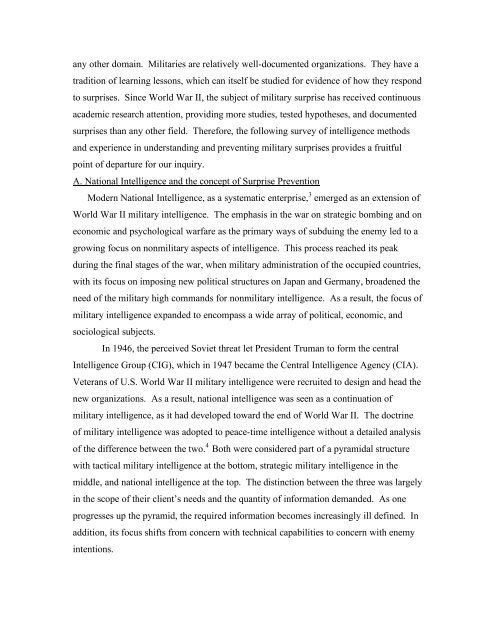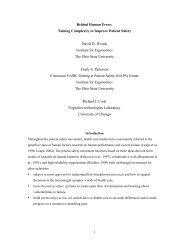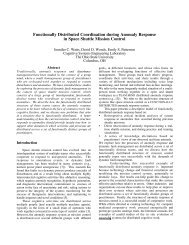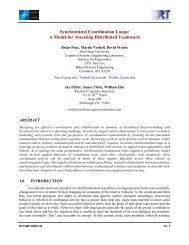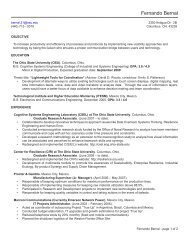Fundamental Surprises Zvi Lanir Decision Research 1201 Oak ...
Fundamental Surprises Zvi Lanir Decision Research 1201 Oak ...
Fundamental Surprises Zvi Lanir Decision Research 1201 Oak ...
- No tags were found...
Create successful ePaper yourself
Turn your PDF publications into a flip-book with our unique Google optimized e-Paper software.
any other domain. Militaries are relatively well-documented organizations. They have a<br />
tradition of learning lessons, which can itself be studied for evidence of how they respond<br />
to surprises. Since World War II, the subject of military surprise has received continuous<br />
academic research attention, providing more studies, tested hypotheses, and documented<br />
surprises than any other field. Therefore, the following survey of intelligence methods<br />
and experience in understanding and preventing military surprises provides a fruitful<br />
point of departure for our inquiry.<br />
A. National Intelligence and the concept of Surprise Prevention<br />
Modern National Intelligence, as a systematic enterprise, 3 emerged as an extension of<br />
World War II military intelligence. The emphasis in the war on strategic bombing and on<br />
economic and psychological warfare as the primary ways of subduing the enemy led to a<br />
growing focus on nonmilitary aspects of intelligence. This process reached its peak<br />
during the final stages of the war, when military administration of the occupied countries,<br />
with its focus on imposing new political structures on Japan and Germany, broadened the<br />
need of the military high commands for nonmilitary intelligence. As a result, the focus of<br />
military intelligence expanded to encompass a wide array of political, economic, and<br />
sociological subjects.<br />
In 1946, the perceived Soviet threat let President Truman to form the central<br />
Intelligence Group (CIG), which in 1947 became the Central Intelligence Agency (CIA).<br />
Veterans of U.S. World War II military intelligence were recruited to design and head the<br />
new organizations. As a result, national intelligence was seen as a continuation of<br />
military intelligence, as it had developed toward the end of World War II. The doctrine<br />
of military intelligence was adopted to peace-time intelligence without a detailed analysis<br />
of the difference between the two. 4 Both were considered part of a pyramidal structure<br />
with tactical military intelligence at the bottom, strategic military intelligence in the<br />
middle, and national intelligence at the top. The distinction between the three was largely<br />
in the scope of their client’s needs and the quantity of information demanded. As one<br />
progresses up the pyramid, the required information becomes increasingly ill defined. In<br />
addition, its focus shifts from concern with technical capabilities to concern with enemy<br />
intentions.


